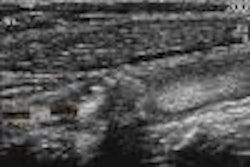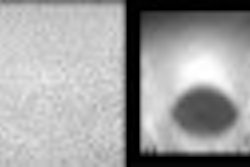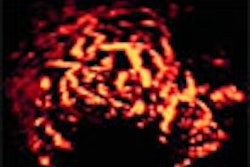(Ultrasound Review) The changing sonographic patterns through childhood of hereditary polycystic kidney diseases were determined in a recent study published in Pediatric Radiology.
Two types of polycystic kidney disease occur -- autosomal recessive (ARPKD) and autosomal dominant (ADPKD). Improvements in technology have led to better ultrasound images, and earlier detection of polycystic kidney disease during antenatal scans and the neonatal period. According to the authors from University Children’s Hospital Queen Fabiola in Brussels, the prognosis of ARPKD has improved and many patients survive because of better management and renal transplantation.
"On the other hand, ADPK tends to be detected earlier than it used to be in the past, secondary to obstetrical US of because of screening of relatives in affected families," they said. Sonographic monitoring is recommended in these patients, but the majority remains asymptomatic until their adult years.
The ultrasound examinations of 29 patients were reviewed by radiologists at their institution. Sixteen children had ARPKD and 13 had ADPKD. The ultrasound characteristics for ARPKD were as follows: ten of the 16 patients had a renal size that was above four standard deviations. All of the kidneys were hyperechoic, and the majority (11/16) lacked corticomedullary differentiation. Seven patients demonstrated cysts <1cm, three patients showed cysts >1cm, and a diffuse microcystic was seen in three children.
"Diffuse hyperechoic foci developed in 14 patients -- 13 of whom had developed renal failure at the time of the examination or rapidly thereafter," they reported.
The ultrasound characteristics for ARPKD were as follows: The renal size was between 0-2 standard deviations, and in the remainder it was greater than two standard deviations. Three patients had hyperechoic kidneys without corticomedullary differentiation, and the remainder had normal (N=5) or difficult to determine echogenicity. Four had cysts <1 cm, eight had cysts that were >1 cm, and five of the eight had cysts >3 cm. Renal failure did not develop in the ARPKD group.
The authors concluded, "in older children, ARPKD and ADPKD may closely resemble each other. Large (>3 cm) cysts are the ultrasound hallmark for the diagnosis of ADPKD; furthermore, fewer ultrasound changes occur with time during childhood in ADPKD."
"Hereditary polycystic kidney diseases in children: changing sonographic patterns through childhood"Avni, F.E. et al
Department of pediatric imaging, University Children’s Hospital Queen, Brussels, Belgium
Pediatric Radiology 2002 March; 32:169-174
By Ultrasound Review
April 9, 2002
Copyright © 2002 AuntMinnie.com



















